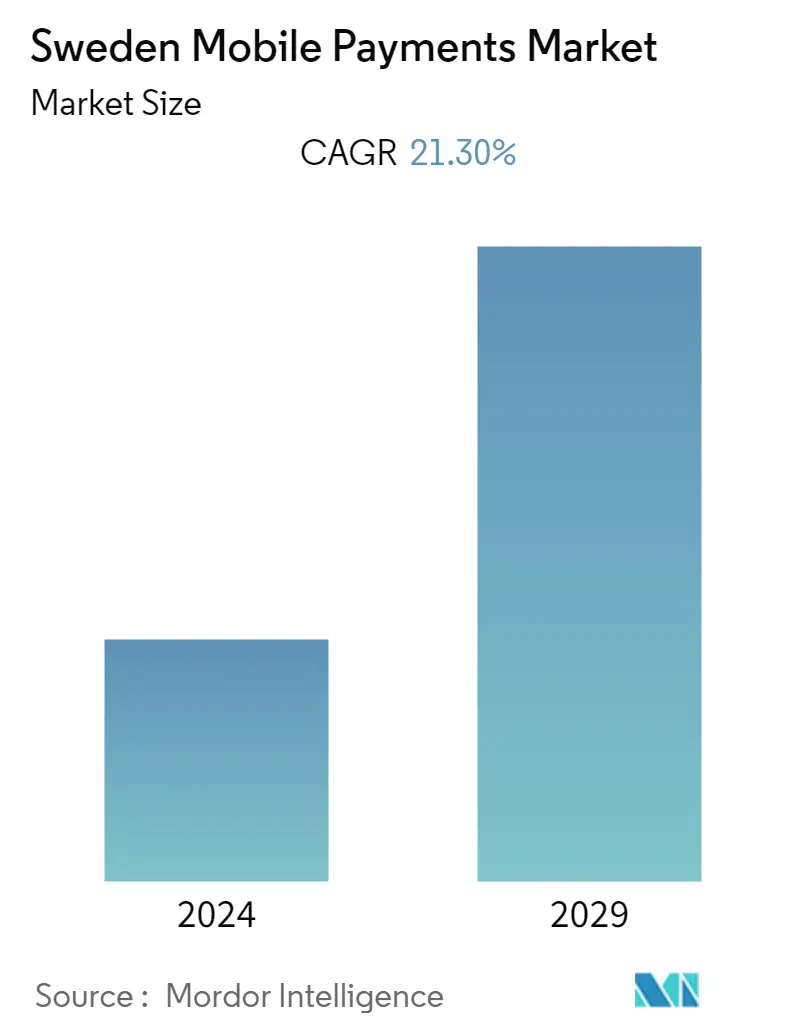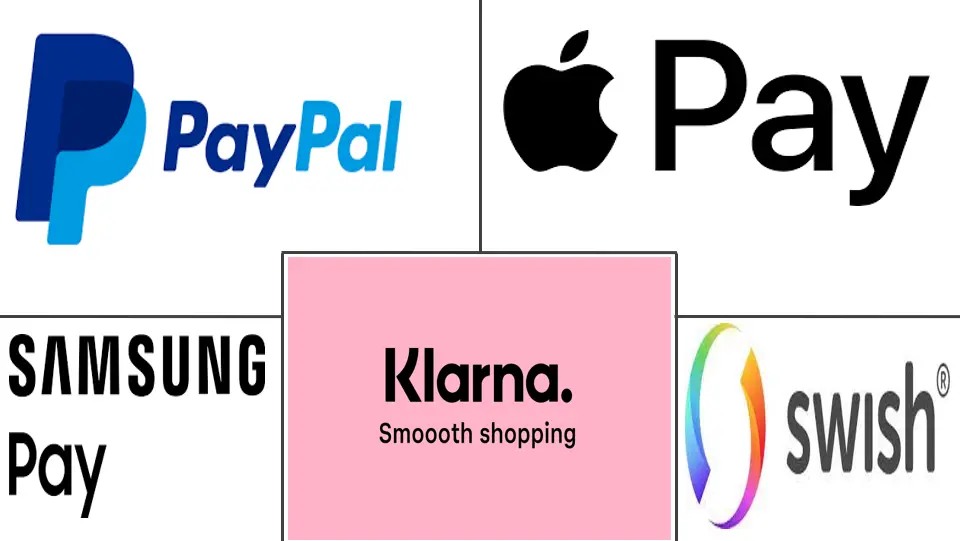Market Size of Sweden Mobile Payments Industry

| Study Period | 2019 - 2029 |
| Base Year For Estimation | 2023 |
| Forecast Data Period | 2024 - 2029 |
| Historical Data Period | 2019 - 2022 |
| CAGR | 21.30 % |
| Market Concentration | Low |
Major Players
*Disclaimer: Major Players sorted in no particular order |
Need a report that reflects how COVID-19 has impacted this market and its growth?
Sweden Mobile Payments Market Analysis
Sweden Mobile Payment Market is expected to register a CAGR of 21.3% during the forecast period. Stores and services worldwide are rapidly adopting mobile payment applications, owing to the rapid growth of mobile technology, particularly with the advancement of smartphones. Also, with increasing internet penetration and rapid growth in online retailing, the market is expected to move positively over the forecast period.
- Sweden, in recent years, has been aiming to adopt contactless payment solutions for its citizens and businesses across the country. For Instance, Sweden recently made all public transport payments cashless, promoting cashless payment solutions. In February last year, Stockholm rolled out an open-loop contactless payment system on public transport across the city. Commuters can now pay for rail, metro, tram, boat trips, and bus fares by tapping their NFC-enabled mobile wallet solution or contactless card against card readers.
- In Sweden, cash payments are progressively being replaced by digital transactions and a growing number of mobile applications. The Riksbank is updating its systems and considering releasing an e-krona to respond to this development. The Riksbank is striving to make sure that using cash is also an option in the future. The country's transactions are often safe, swift, and effective. The Riksbank collaborates with other parties to strengthen the payment system's resistance to interruptions.
- Using a cell phone to make a payment is becoming increasingly frequent. Almost everyone between the ages of 15 and 65 has the Swish app downloaded to their smartphone. Using systems like Apple Pay and Google Pay, for instance, there are now more methods than ever to pay with a mobile device.
- The increasing trend of digital-only banks would support the mobile payment market in the country. For instance, Revolut launched its banking services in the country in January last year. Previously Digital-only bank N26 launched in Sweden in November 2018. Revolut offers business and individual accounts, a Mastercard-branded debit card, digital banking solutions like online payments, POS payment solutions across the country, and mobile payment services.
- Sweden is already at the forefront of adopting mobile payment services for fast and instant payment solutions. Still, these services also have some challenges. Integrating mobile payments still faces difficulties and significant challenges, such as online fraud, cyberattacks, and identity theft. Also, there is an additional cost of setting up new devices (infrastructure) to boost mobile payment solutions with the innovation of technologies like 5G, NFC-enabled devices, and IoT.
- The payment industry is experiencing significant transformation during and after the coronavirus pandemic. Swedish customers are choosing safe digital payments more frequently, lowering the usage of cash and thereby driving them to use contactless mobile and card payments more often when transacting in shops. For example, with Swish, E-commerce and mobile payments are becoming increasingly common. Other payment applications, such as Apple Pay and Google Pay, are becoming more popular.
